How Many Hours Can You Run A Gas Fireplace?

Ah, the warm glow of a crackling fire…is there anything more delightfully cozy? If you’re a proud owner of a gas fireplace, you might enjoy snuggling up by the fireside all evening. But, how many hours can you run a gas fireplace before you have problems?
You can run a vented gas fireplace continuously as long as the glass front remains closed and it vents to the outdoors. You can run a ventless gas fireplace for no more than two to three hours to avoid carbon monoxide exposure. Most gas fireplaces are vented but check before operating your fireplace if you are unsure what you have.
Understanding the maximum time your fireplace can stay lit isn’t just a fire safety issue. It’s a carbon monoxide issue, and it’s crucial to know your fireplace’s limits before you get too comfortable. This guide will help you understand what’s going on and what you need to know about staying safe.
How Long Can You Run A Vented Fireplace?
If you were hoping to use a gas fireplace as a main source of heat for your home this winter, it better have a vent. Any type of fireplace that is gas-powered will need to have ventilation in order to remain in use for a long period of time. This is because gas fireplaces emit carbon monoxide during their burn times. Carbon monoxide needs to be vented out before it builds up to toxic levels.
If you have a vent that extends to the outside of your home, you have enough ventilation in order to remove the carbon monoxide. However, there are still some things you need to be aware of when you run your fireplace:
- The glass pane in front of the fireplace needs to stay closed. If you have a fireplace pane, it needs to remain closed to ensure that any gas or soot gets pushed to the vent.
- You still need to make sure that the fireplace is attended. Like with any other fireplace, leaving the flame unattended is a terrible decision.
- Leave your flue open after running your fireplace’s flame. Keeping your flue open will help drain out the soot and carbon monoxide after your run. It also helps improve the overall efficiency of your fireplace.
- The fireplace still needs to be in working order. If your fireplace is broken, has chipped parts, or otherwise isn’t in a decent state, you should repair it before you ever consider turning it on.
Can You Leave A Vented Gas Fireplace On Overnight?
While there’s technically no limit to how long a vented gas fireplace can be left on, it’s still a terrible idea to leave your fireplace on overnight. One of the main tenets of fire safety is to never leave a fireplace unattended overnight, and that includes the flames in fireplaces. Unless you have someone who will be awake all night, you should turn your fireplace off.
Can Leaving On A Vented Gas Fireplace Cause A Fire?
Almost any fireplace that’s left on for a prolonged period of time will turn into a fire hazard. The longer you leave the fireplace on, the more likely it is that you’ll have an accidental fire. This is because the heat from the fireplace can ignite items nearby. This is the primary reason why you should not leave your fireplace on while you sleep. You never know what’ll happen.
How Long Can You Run An Unvented Fireplace?
Though the vast majority of fireplaces are built with vents, there are homes out there that have an unvented gas fireplace. These are smaller fireplaces that do not have any connection to the outside and often have an open flame present. These are unvented fireplaces, and they are generally considered to be primarily made for decorative purposes.
If you have an unvented fireplace, carbon monoxide won’t have anywhere to go. This limits the amount of time you have before you need to shut off your gas fireplace. For a typical home, this will be between two to three hours at most.
What Happens If You Run Your Vent-Free Fireplace For Longer Than You Should?
At first glance, you won’t have anything happen. The fireplace will keep burning, but unbeknownst to you, carbon monoxide levels would start to increase steadily. Eventually, you may start to feel groggy, drowsy, or sick to your stomach. If you have a carbon monoxide detector, you may also hear it go off.
Carbon monoxide is the number one issue that you need to worry about. If you’re still running your fireplace after all this has happened, then you will probably experience severe carbon monoxide poisoning. This, in turn, can cause permanent damage to your body.
Signs of carbon monoxide poisoning include nausea, headache, vomiting, weakness, shortness of breath, dizziness, confusion, and blurred vision. If you notice any of these signs, it’s important to seek medical care immediately.
Also, if you have a gas fireplace, whether it’s vented or ventless, it’s wise to have a carbon monoxide detector in your home. This tip applies to anyone that has any type of gas appliance in their home.
Can You Leave A Vent-Free Fireplace On In Any Room?
While vent-free fireplaces are still relatively safe, it’s important to make sure your room is in a decently safe shape for fire. This is particularly true with vent-free fireplaces since they pose both a fire hazard and a carbon monoxide hazard. Here’s what you should do to stay safe.
- Make sure your room is well-ventilated. Even though vent-free fireplaces don’t need a vent to operate, it’s still best to have a window cracked open while you run your fireplace. The CO can build up faster than you’d think, especially if you don’t have a vent or window opened up.
- Keep a carbon monoxide alarm near your fireplace. This should be a staple for any fireplace room, but it can be particularly life-saving if you have a vent-free fireplace.
- Do not keep any papers, clothes, or textiles near your fireplace. Like other rules on here, this is a must-have for any fireplace. Since vent-free fireplaces don’t always have glass panels to protect items from the heat or flame, doing this can be the only way to make sure you don’t have things catch fire.
- If you have a portable fireplace, it’s best to use it outside. This is a type of vent-free fireplace that’s typically designed for exclusively outdoor use. However, some people still use them inside. Keeping your fireplace outside is a good way to fully prevent carbon monoxide poisoning and also keep your family safe.
- Always make sure to use a working fireplace. If your fireplace has a hard time staying lit or shows signs of damage, don’t use it as it could quickly turn deadly.
Related Questions
Is it expensive to run a gas fireplace all day?
If you have a gas fireplace, you already know that gas is remarkably low-cost compared to most other fuels. Depending on your location and the current prices of gas, it’s possible to run a small gas fireplace on all day for as little as $2. This makes it one of the most affordable sources of heat that money can buy.Gas fireplaces are far cheaper than electric fireplaces when it comes to their running time. If you are concerned about your heating bills, this is great news. You can save as much as 70 percent off the price of your heating by switching to gas.
Does adding a gas fireplace improve your home’s value?
People who are looking to increase their home’s value should strongly consider getting a gas fireplace. Studies show that you can recover more than your initial investment on the fireplace in home value. This makes adding a gas fireplace one of the most excellent ways to improve your home’s value while increasing your overall comfort levels.If you are looking for specifics, a fireplace will add between six to 12 percent more to your home’s value. How much it adds depends on local demand as well as the design of the fireplace.
Why is my gas fireplace hot even though it’s not on?
Gas fireplaces retain some of their heat because of the pilot light. The pilot light still remains on and will generate a small amount of heat as a result. This won’t turn your fireplace into a fire hazard, but it will keep it above your room’s overall temperature. To make your fireplace totally cold, turn off your pilot light and shut off the gas.

Ossiana Tepfenhart is an expert writer, focusing on interior design and general home tips. Writing is her life, and it's what she does best. Her interests include art and real estate investments.
More by Ossiana Tepfenhart




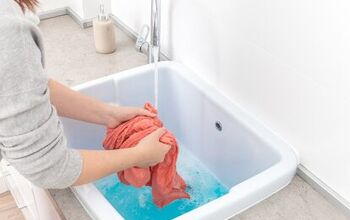





![How To Turn On A Gas Fireplace With A Wall Switch [Quickly & Easily]](https://cdn-fastly.upgradedhome.com/media/2023/07/31/9076525/how-to-turn-on-a-gas-fireplace-with-a-wall-switch-quickly-easily.jpg?size=350x220)
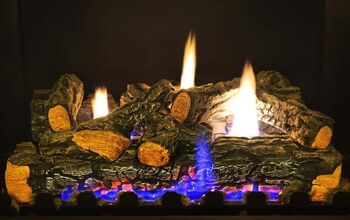
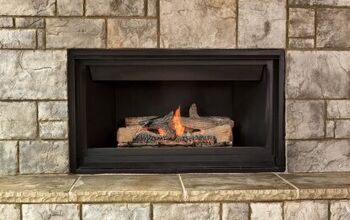
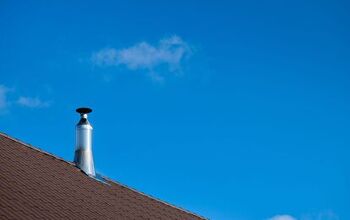
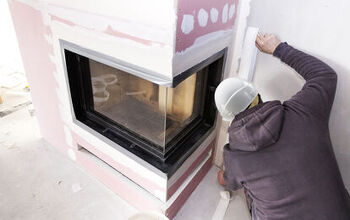



![Standard Dining Room Table Dimensions [for 4, 6, 8, 10 and 12 People]](https://cdn-fastly.upgradedhome.com/media/2023/07/31/9074335/standard-dining-room-table-dimensions-for-4-6-8-10-and-12-people.jpg?size=350x220)








